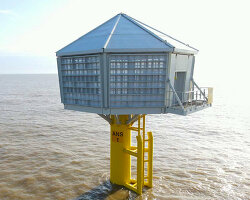
Jellyfish-Bot by robotocists at Max Planck Institute for Intelligent Systems
KEEP UP WITH OUR DAILY AND WEEKLY NEWSLETTERS
PRODUCT LIBRARY
the restomod lamborghini diablo hypercar by emanuel colombini and borromeodesilva borrows its revamped design cues from diablo GTR.
connections: +800
the SL03 wins the red dot design award 2023 as first all-electric car of deepal.
connections: +1340
samsung unveils T7 shield - a portable SSD that is dustproof, water-resistant, and absorbs shock from drops of up to three meters.
connections: +100
toni pavic, head of branding and partner at LEMMO, speaks to designboom at the red dot design award 2023 ceremony.
connections: +600













